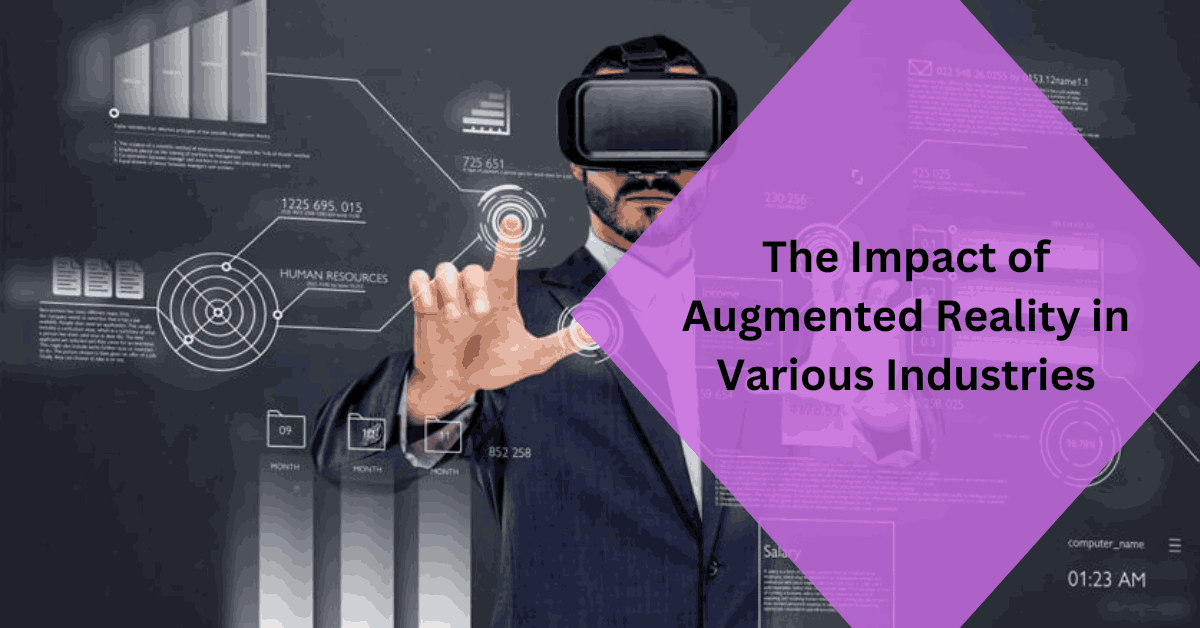The Impact of Augmented Reality in Various Industries
Augmented Reality (AR) has emerged as a transformative technology with the potential to reshape how we perceive and interact with the world.
By overlaying digital information onto the physical environment, AR has found applications across various industries, enhancing experiences, improving efficiency, and unlocking new possibilities.
Let’s explore the significant impact of augmented reality in diverse sectors:
Table of Contents
1. Retail and E-Commerce:
AR is revolutionizing the retail and e-commerce landscape by providing immersive shopping experiences. Customers can use AR applications to visualize products in their real-world environments before making a purchase. This includes trying on virtual clothing, previewing furniture in their homes, or even seeing how cosmetics look on their faces.
2. Education and Training:
In education, AR is enhancing learning experiences by making educational content more interactive and engaging. AR applications can overlay additional information onto textbooks, create 3D models for better understanding, and facilitate virtual field trips. In professional training, AR is used for simulated environments and hands-on training in various industries.
3. Healthcare:
In healthcare, AR is improving diagnostics, surgery, and patient care. Surgeons use AR to visualize patient data during procedures, reducing the need for separate screens. Medical students can practice surgeries in augmented reality environments. AR is also used for patient education, allowing individuals to better understand their conditions through interactive 3D models.
4. Manufacturing and Maintenance:
AR has proven invaluable in manufacturing and maintenance processes. Workers can use AR glasses or devices to access real-time information and instructions, aiding in assembly, maintenance, and troubleshooting. This improves efficiency, reduces errors, and accelerates the learning curve for new tasks.
5. Real Estate:
In real estate, AR is transforming property visualization. Prospective buyers can use AR applications to view virtual furniture in empty rooms, explore the neighborhood, or take virtual tours of properties. This immersive experience enhances the decision-making process for potential homebuyers and renters.
6. Gaming and Entertainment:
AR has had a significant impact on the gaming and entertainment industry, as seen with the success of games like Pokémon GO. Augmented reality games merge the virtual and physical worlds, providing users with interactive and immersive experiences. AR is also being used to enhance live events, concerts, and theme park attractions.
7. Automotive:
In the automotive sector, AR is used for heads-up displays (HUDs) that project essential information onto windshields, offering drivers real-time data without taking their eyes off the road. AR is also applied in vehicle maintenance, guiding technicians through repair processes and reducing downtime.
8. Tourism and Hospitality:
AR is enhancing the tourism and hospitality industry by providing interactive guides and experiences. Tourists can use AR apps to access information about historical sites, landmarks, and points of interest by simply pointing their devices. Hotels use AR for virtual concierge services and to provide guests with information about nearby attractions.
9. Architecture and Design:
In architecture and design, AR enables professionals to visualize and present projects more effectively. Architects can use AR to overlay digital models onto physical spaces during site visits. Clients can experience virtual walkthroughs of buildings before construction, making design decisions more informed.
10. Advertising and Marketing:
AR is transforming advertising and marketing campaigns by creating interactive and engaging content. Brands use AR to allow consumers to virtually try products before purchasing, participate in immersive brand experiences, and unlock exclusive content by scanning AR codes.
11. Sports and Fitness:
In sports, AR is enhancing viewer experiences with augmented reality graphics during broadcasts. For fitness enthusiasts, AR applications can provide real-time data, instructions, and feedback during workouts. This technology is also used in sports training for analysis and simulation.
Conclusion:
Augmented Reality is a versatile technology with the potential to revolutionize diverse industries. As it continues to evolve, AR will likely play an increasingly integral role in shaping how we work, learn, shop, and experience the world around us. The ongoing innovation and integration of augmented reality underscore its transformative impact on various sectors, contributing to a more connected, immersive, and efficient future.

